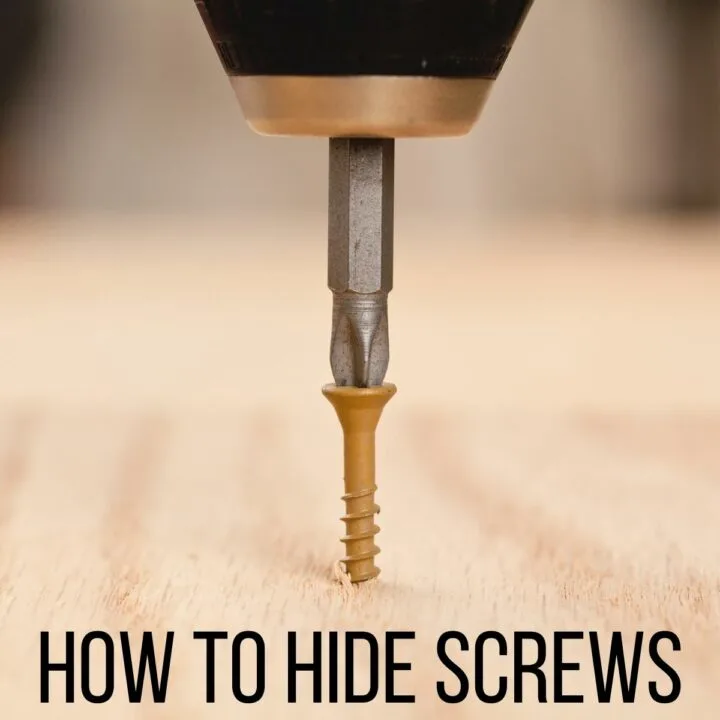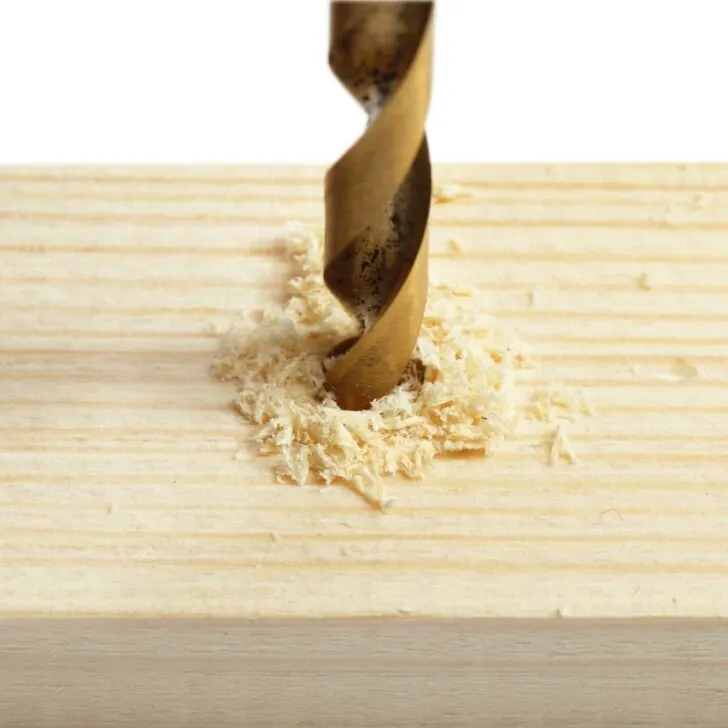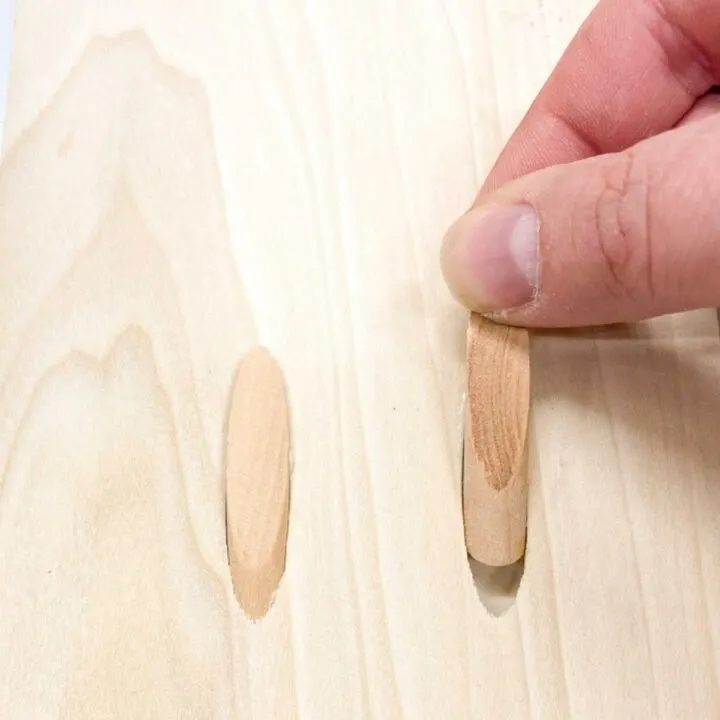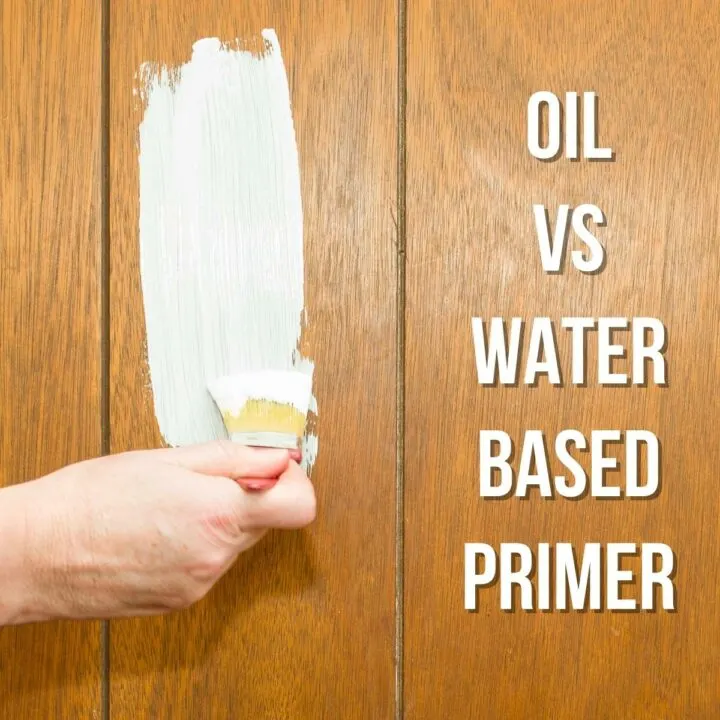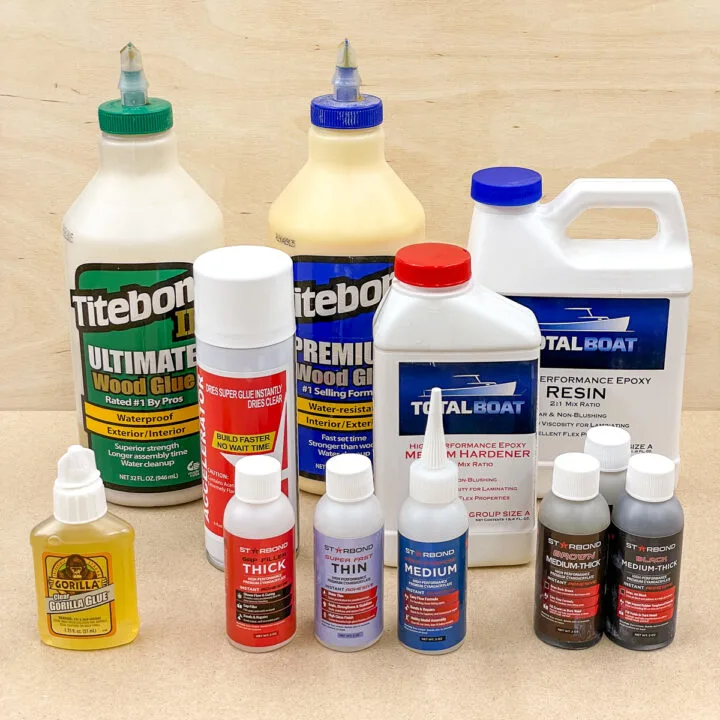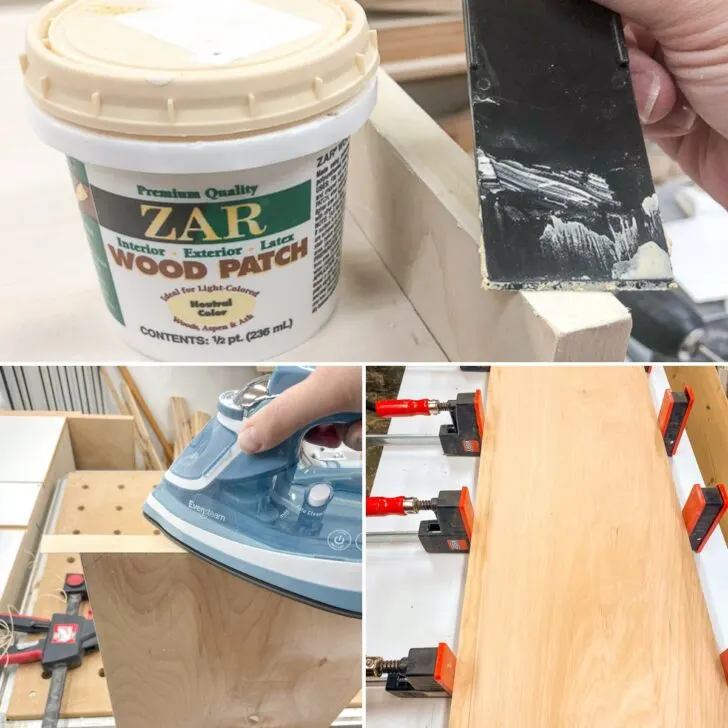Confused by all the different types of wood filler? This article goes over the different options and when you should use one over the other.
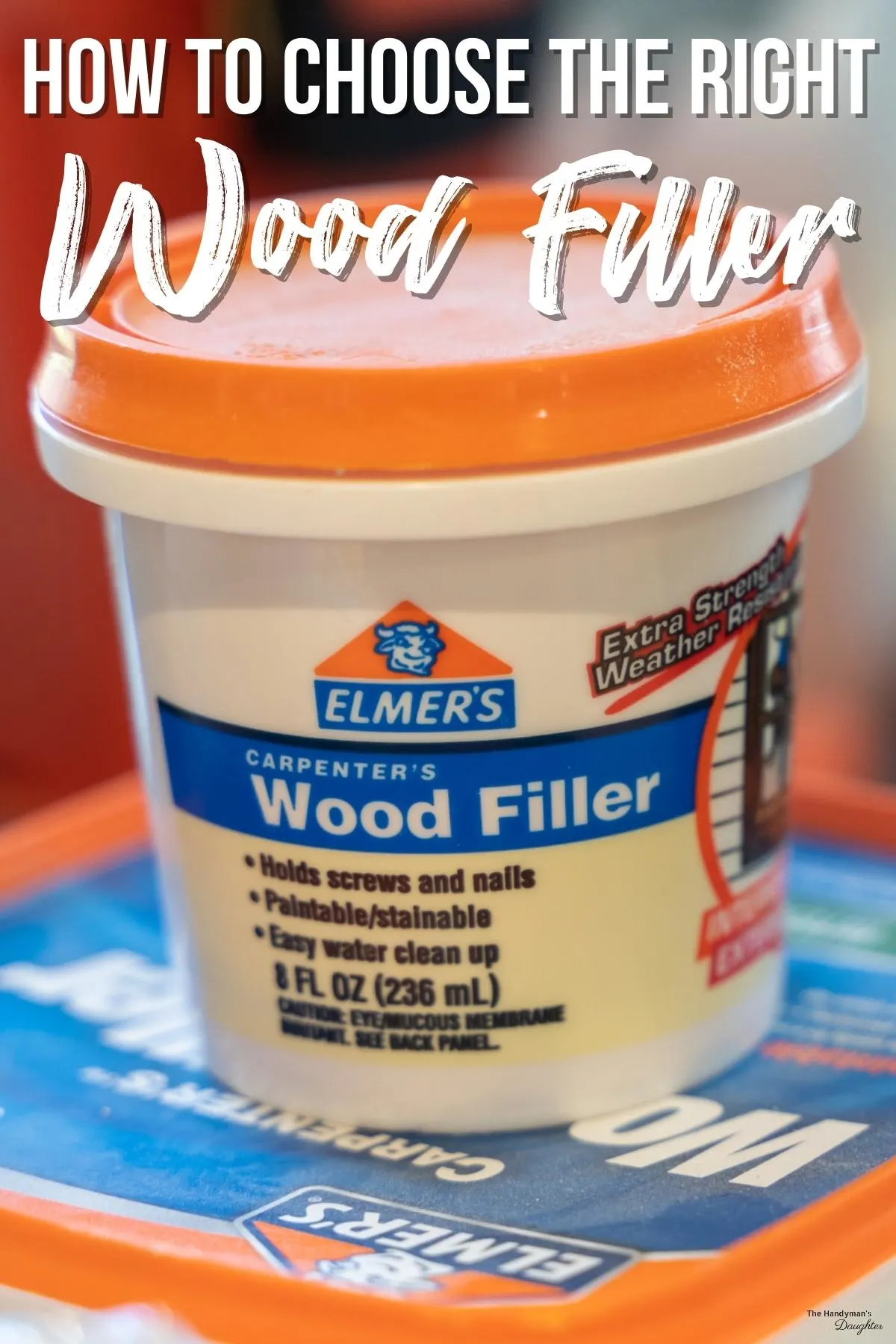
Did you drill cabinet pull holes in the wrong spot? Or maybe there's a big gap between the joints of your first woodworking project. Don't worry, a little wood filler will patch that right up!
But before you go smearing that goop all over the place, make sure you're using the right one for your situation. There's a big difference between wood filler and wood putty, and choosing the wrong product can make your little mistake look more obvious!
Before we talk about how to fill holes with wood filler, let's go over the options available and when to use each one. Then read this article about how to use wood filler to get a flawless finish!
This post contains affiliate links for your convenience. Purchases made through these links may earn me a small commission at no additional cost to you. Please visit my disclosures page for more information.
Different Types of Wood Filler
Water-based wood filler
This is the most common type wood filler, and it's usually made with wood glue mixed with wood fibers and other additives. Because it's water-based, it cleans up easily with soap and water, and can be rehydrated if it dries out in the jar.
However, because it's water based and will turn back into a paste when exposed to water, it's not a great idea to use it outdoors or in areas that might get wet. You don't want your repair job to melt away!
While many brands say they are stainable, I've found that the patches are pretty obvious. The wood filler absorbs the stain differently than the surrounding wood fibers, and looks flat. I tend to stick with wood putty for stained projects.
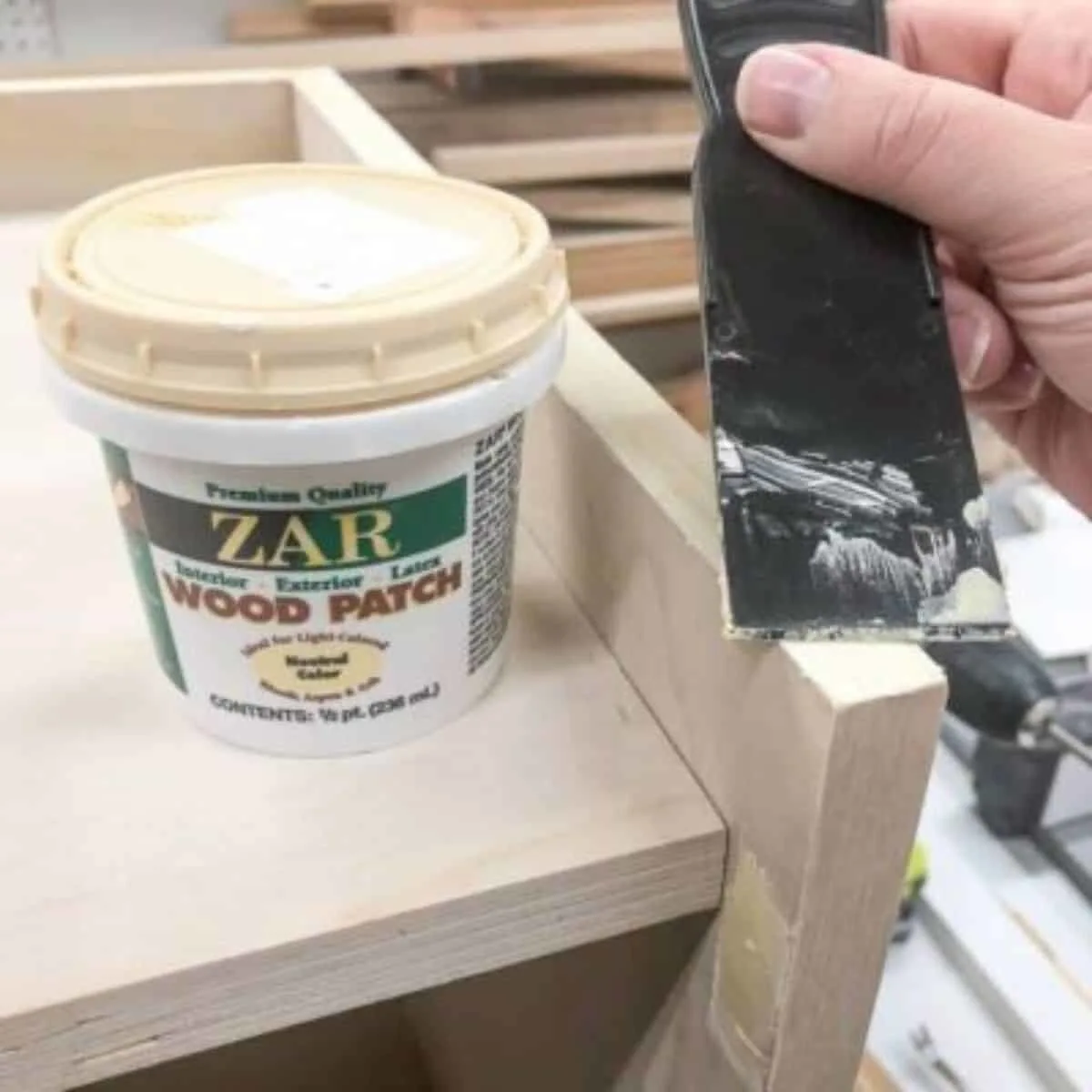
Another downside to water-based wood filler is that it shrinks as it dries. Always overfill your holes so you don't end up with a divot after the water evaporates!
This type of wood filler is best for indoor projects that will be painted. I've found that a larger tub is easier to use, because I can scoop out what I need with a putty knife rather than squeezing it out.
Epoxy wood filler
Epoxy is all the rage in woodworking these days! It's commonly used to fill large voids in highly figured wood, with colorful dyes and pigments added for a cool effect.

Epoxy can also be used as a wood filler. It's more durable than water-based wood fillers and dries to a harder finish. Epoxy is an adhesive, so it bonds with the surrounding area rather than sitting on top. The patch won't soften when exposed to moisture, making it a better choice for exterior use.
Unlike liquid epoxy, epoxy wood filler has a putty-like consistency can be molded into shape. It comes with two separate components that are mixed together right before application. Only mix the amount needed for your project and stir well to make sure they're combined thoroughly.
Epoxy generates heat when combined, so be careful when handling it. You should also wear protective gloves, safety glasses and a chemical respirator (or work in a well ventilated area) to avoid the fumes.
Pore-filling wood filler
If you want to hide the open grain of the wood before painting, consider using a pore-filling wood filler first. This is a translucent type of wood filler that is usually a little watery, and can be wiped onto the wood, similar to a thick stain.
I wish I had used this product when painting the oak parts of my 80's kitchen cabinets! Oak has large, open grain that is obvious even with multiple coats of paint. The grab bars and cabinet end panels didn't look smooth even after sanding and painting because the grain wasn't filled.
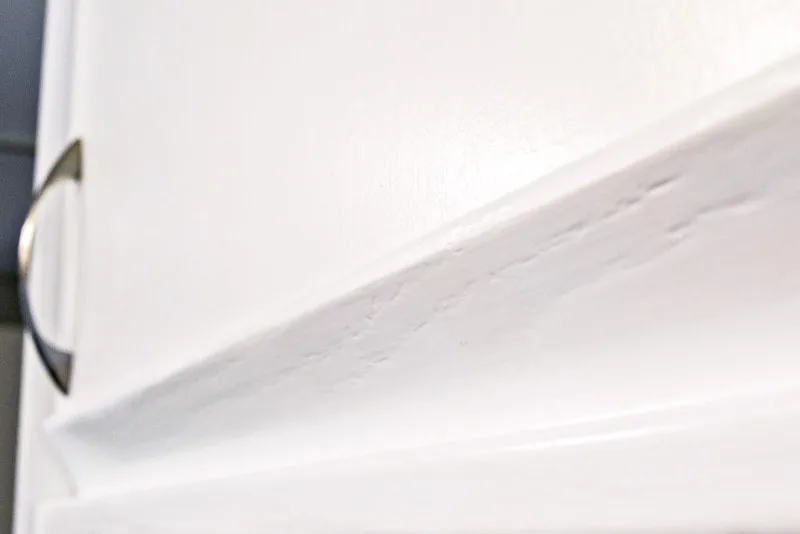
Solvent based wood fillers
Solvent based fillers are durable and typically used for large gaps. Plastic wood by DAP is a good example. Some of these compounds contain wood fibers and are advertised as stronger than wood, meaning you can place nails and anchors within the filler itself. This is also popular for exterior woodwork.
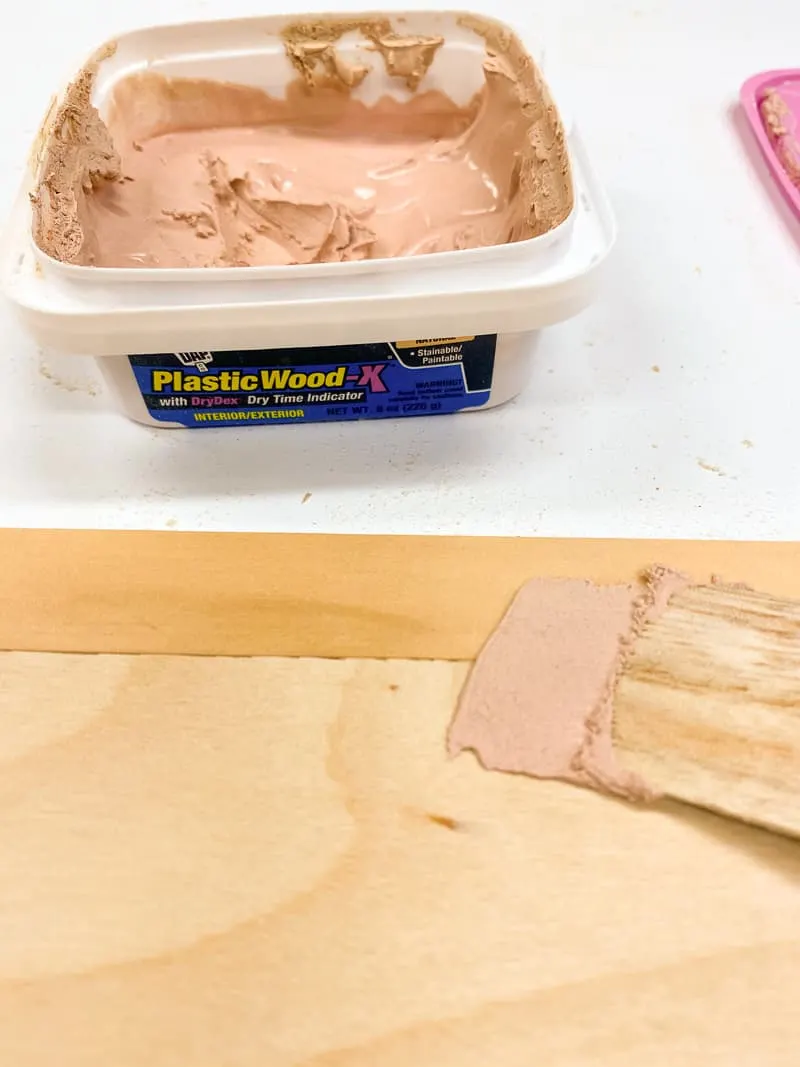
Two-part wood filler
Bondo is better known for auto body repair, but they also make a two-part wood filler! It works similarly to epoxy, with two separate components that activate when combined.
The nice thing about this filler is that it can bind to other materials as well, and it dries quickly and sands down nicely. You can form and shape it to fill in larger chunks, such as damaged door frames or rotted trim.
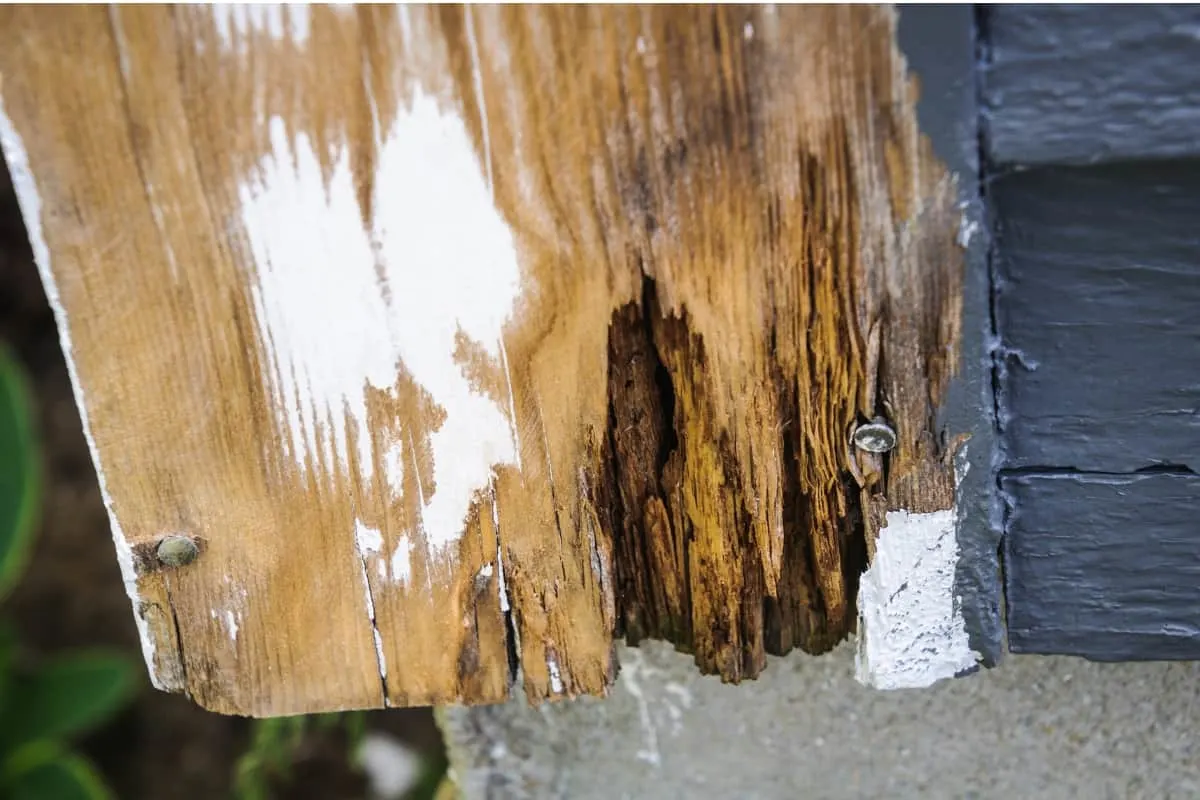
Homemade Wood Filler
You can also make your own wood filler! Just mix sawdust from your sander's dust bag with standard wood glue until it forms a paste. Then smear it on your project for a perfect color match!
How to Choose the Right Wood Filler
Is it the end of the world if you choose the wrong product? No, but it can cause problems. If you're at the hardware store staring at a shelf full of wood filler options, there are a few things to consider.
Some types of wood filler aren't made to be painted or stained. Other types are not meant to fill large gaps. To get the best finished product, you should be aware of the properties of the wood filler, and the needs of your project.
Here are three questions to consider when deciding which type of wood filler you need.
Finished or unfinished projects
Finished projects already have a stain and top coat applied. If you're just trying to touch up a dent or scratch to make it match the surrounding wood, then you should go with wood putty sticks. These can be rubbed over the scratch, and instantly improve the appearance.
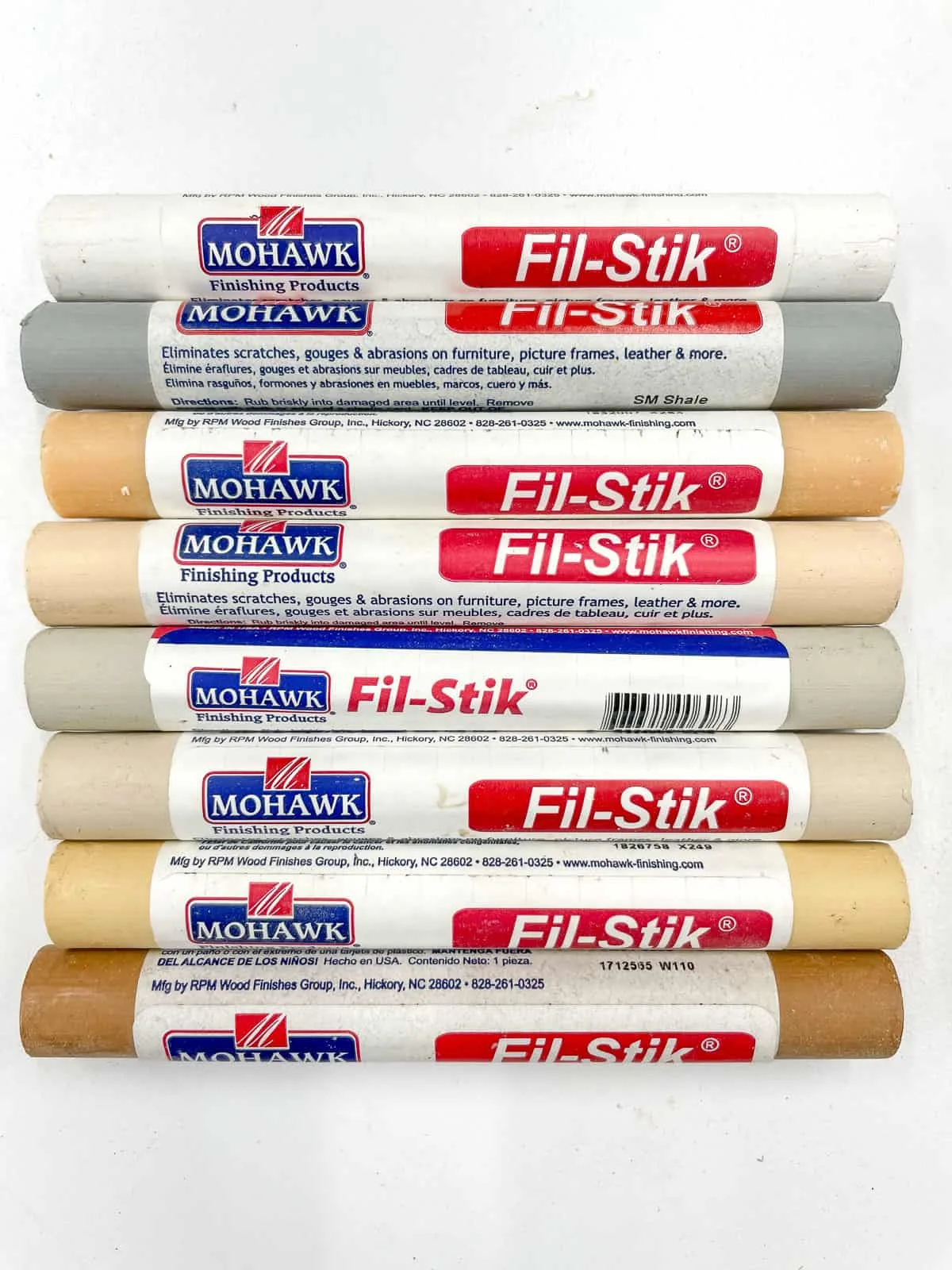
If the finished product has sustained a big enough gash, then you might want to refinish it instead. This involves either sanding everything down or using stripper to remove the paint or stain. Then you can repair the damage with wood filler, and apply a new finish.
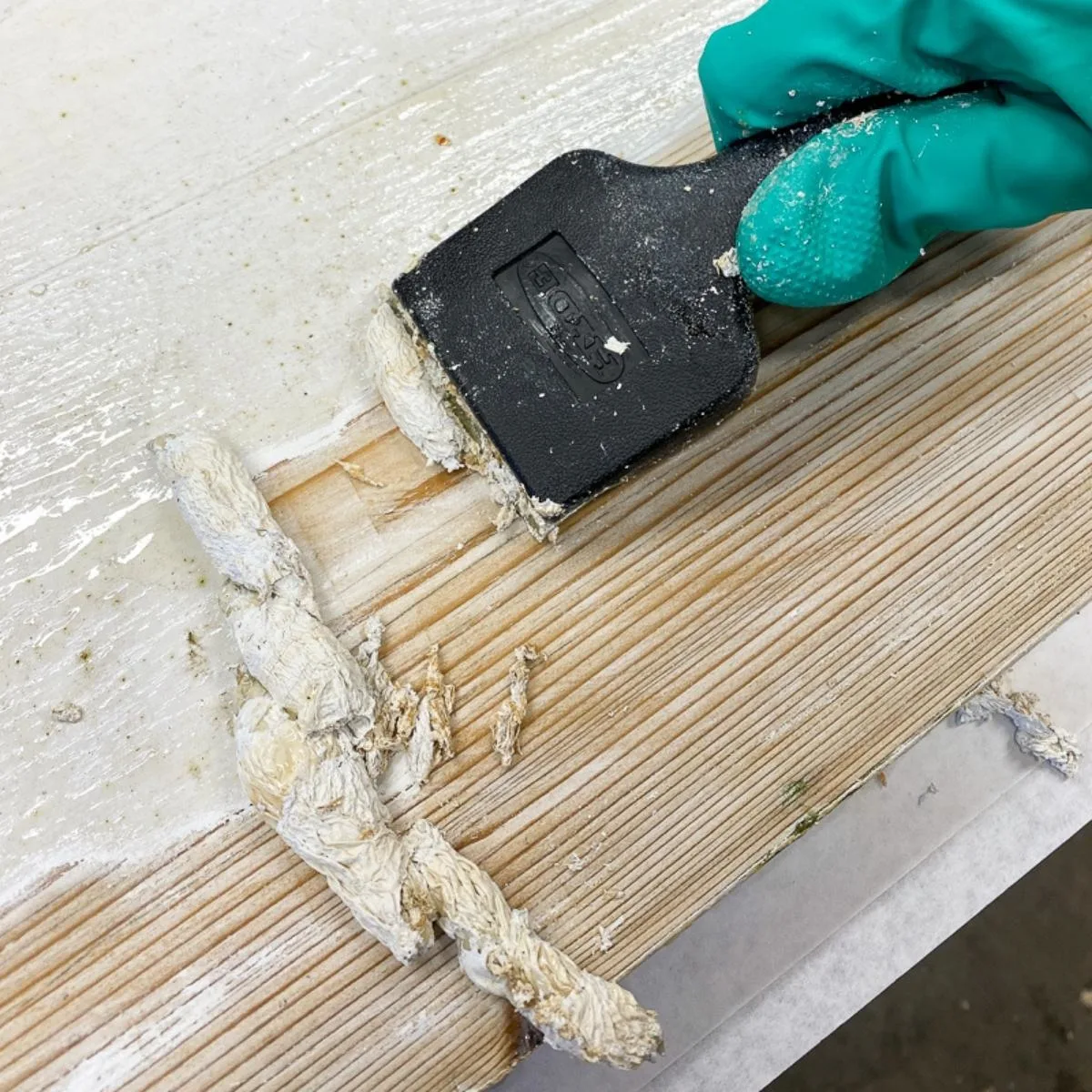
For an unfinished project, you can use a standard wood filler. This will work well if you want to paint. If you plan to stain, then use a product that matches the wood tone or one marked as stainable.
Large or Small Gaps
The size of the gaps you want to fill will also determine which type of wood filler to use.
For small gaps or holes in interior projects, regular water-based wood filler will do. It dries quickly and is easy to sand, so you can move on with your project.
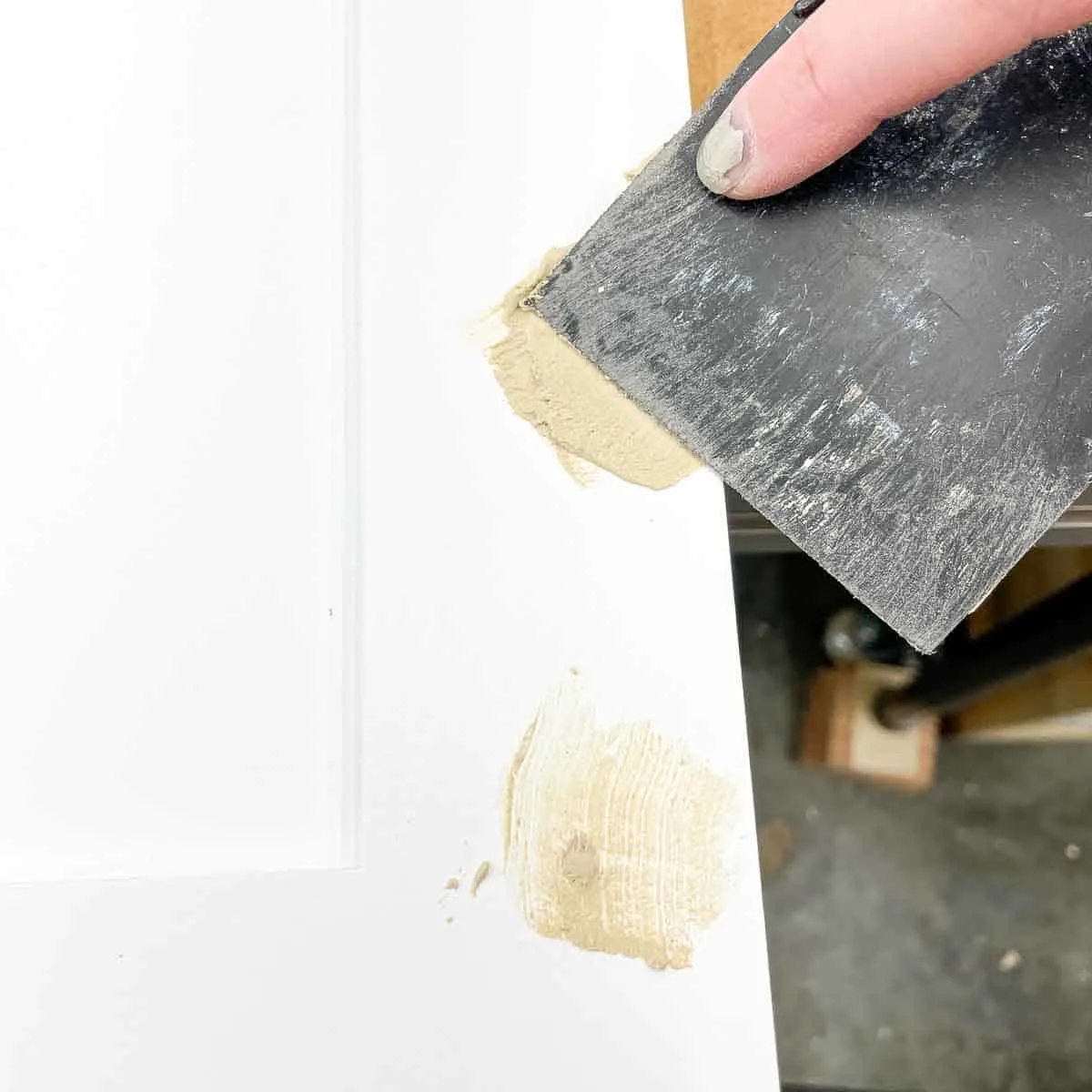
If you have a large gap or repair, then you'll want to use a more durable wood filler such as epoxy or Bondo. It adheres to the surrounding area, so the patch doesn't fall out.
Visible or Structural Areas
For structural projects, using something like epoxy wood filler or solvent based wood filler will be the way to go. This allows you to fill a large gap without losing considerable strength. Some products claim to be stronger than wood when cured, and can hold screws or other fasteners without crumbling.
For areas that won't be visible, and won't be structural, you can pretty much use anything you'd like! Since no one can see it, and it won't affect the strength of the project, standard wood filler will be fine.
I hope this article answered any questions you might have about the different types of wood filler! Now that you know which one to choose, check out my tutorial on how to use wood filler for the best results!

